Heavy Medal Mock Newbery Finalist: MARSHMALLOW CLOUDS by Ted Kooser and Connie Wanek
Introduction by Heavy Medal Award Committee Member Amanda Sealey
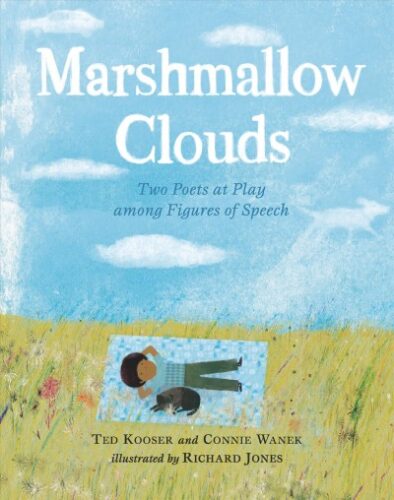
A poetry collection of the most imaginative kind, MARSHMALLOW CLOUDS: TWO POETS PLAY AMONG FIGURES OF SPEECH blends two poet’s distinct styles into one seamless book. Categorized by the four elements: Fire, Water, Air, and Earth, the reader is
given the delight of being immersed in natural settings and the gift of using their imaginations to bring these poems to life. From the quiet punch of emotion in “Secrets”:
“It’s good to free a secret
and let the place in your chest
where it crawled you like a badger scar over and heal”
to the chuckle-inducing moments in “Cow Pie”:
“People who live in cities
never get to accidentally step
in a cow pie. You never find them
fresh, steaming on a concrete street
near a parking meter
in front of the French bakery.
No one puts alfalfa in a pie
the way a cow does.”
These poems are reflective, gentle, and sometimes humorous, all while allowing for imaginative introspection. Underlying metaphors are laced throughout the pages, making each stanza uniquely stand out.
Images are evoked throughout, furthering the imaginative play. Marshmallows are grandmother’s cheek and books are the “chewy salami of history.” Meteor showers are like cat scratches and barns have “patched-up underwear of rotten boards.” The similes and powerfully descriptive imagery give the reader a chance to picture the poems in their minds, despite what the illustrations may show.
ADVERTISEMENT
ADVERTISEMENT
Though unsigned, as if written by a single author, each poem in the elemental categories flows into the next seamlessly. They are atmospheric and have a meandering way of getting the reader to both smile and think.
Heavy Medal Award Committee members and others are now invited to discuss this book further in the Comments section below. Please start with positive observations first; stick to positives until at least three comments have been posted or we reach 1:00 pm EST. Let the Mock Newbery discussion begin!
Filed under: Book Discussion, Heavy Medal Mock
About Emily Mroczek-Bayci
Emily Mroczek (Bayci) is a freelance children’s librarian in the Chicago suburbs. She served on the 2019 Newbery committee. You can reach her at emilyrmroczek@gmail.com.
ADVERTISEMENT
ADVERTISEMENT
SLJ Blog Network
Name That LEGO Book Cover! (#53)
Cover Reveal and Q&A: The One and Only Googoosh with Azadeh Westergaard
Exclusive: Vol. 2 of The Weirn Books Is Coming in October | News
Fighting Public School Book Bans with the Civil Rights Act
Take Five: Middle Grade Anthologies and Short Story Collections
ADVERTISEMENT

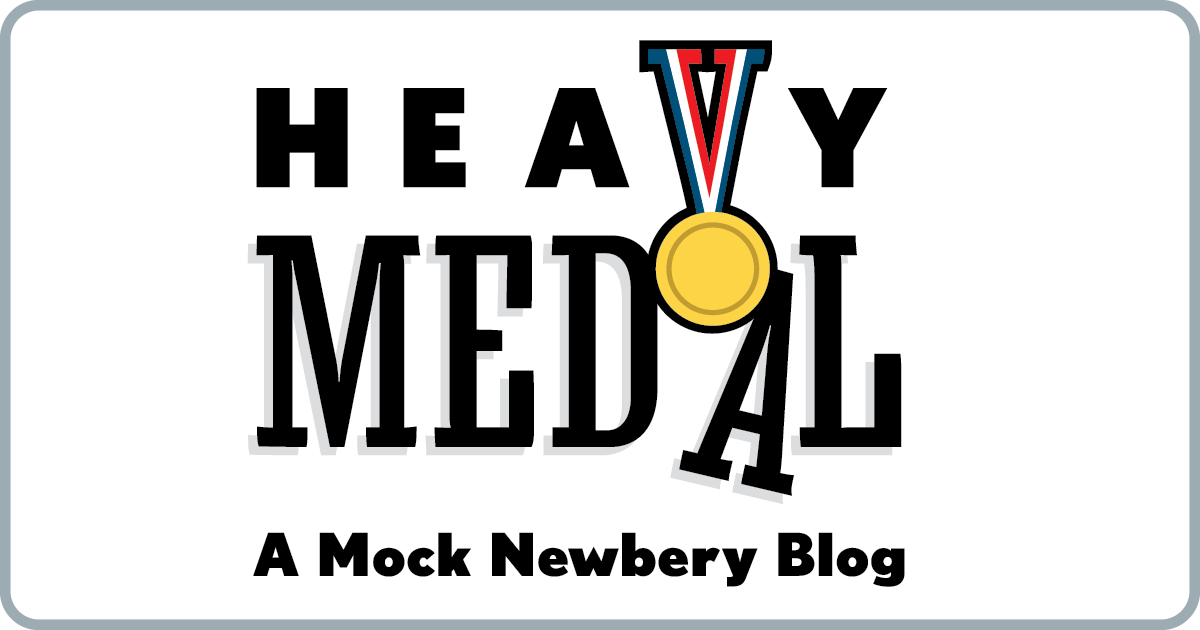

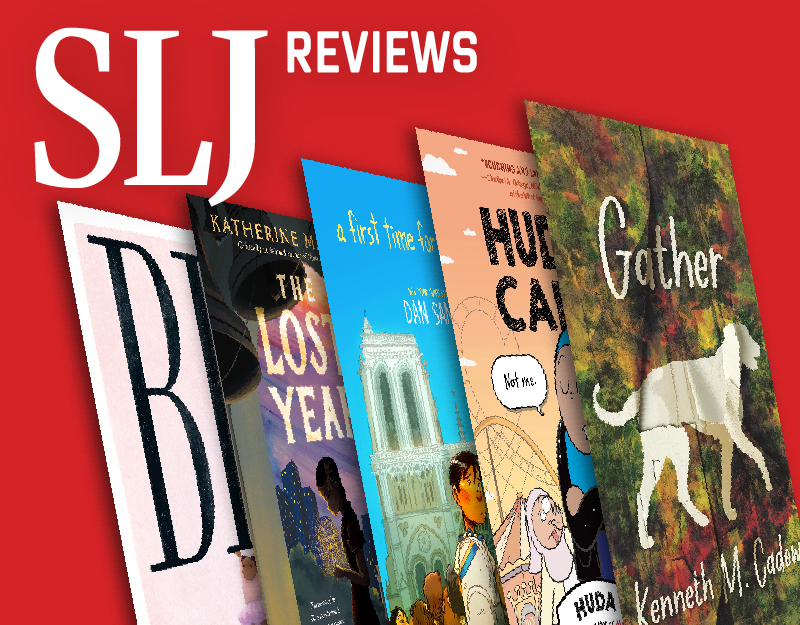
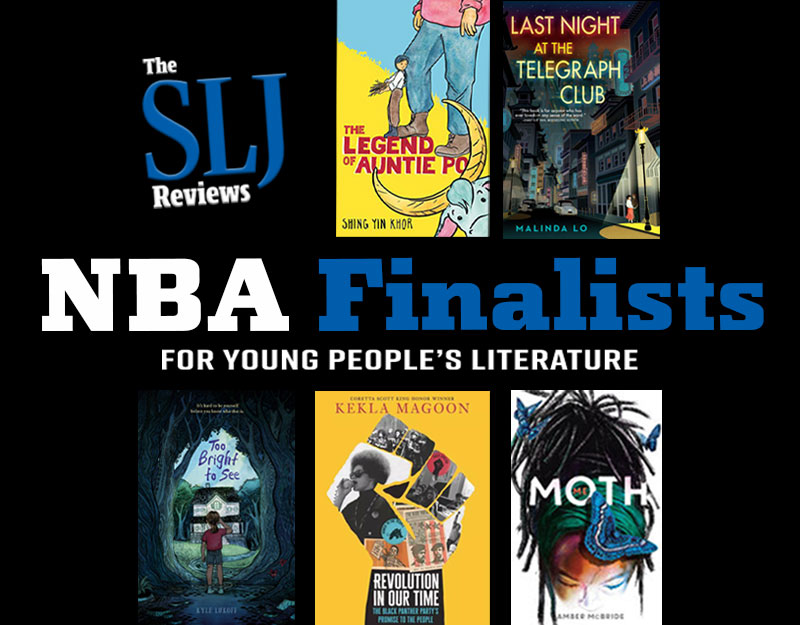
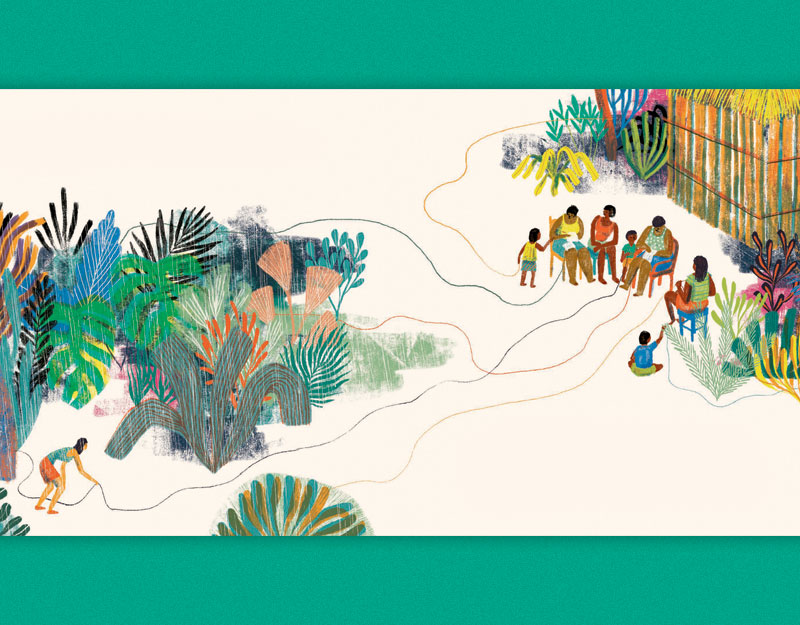
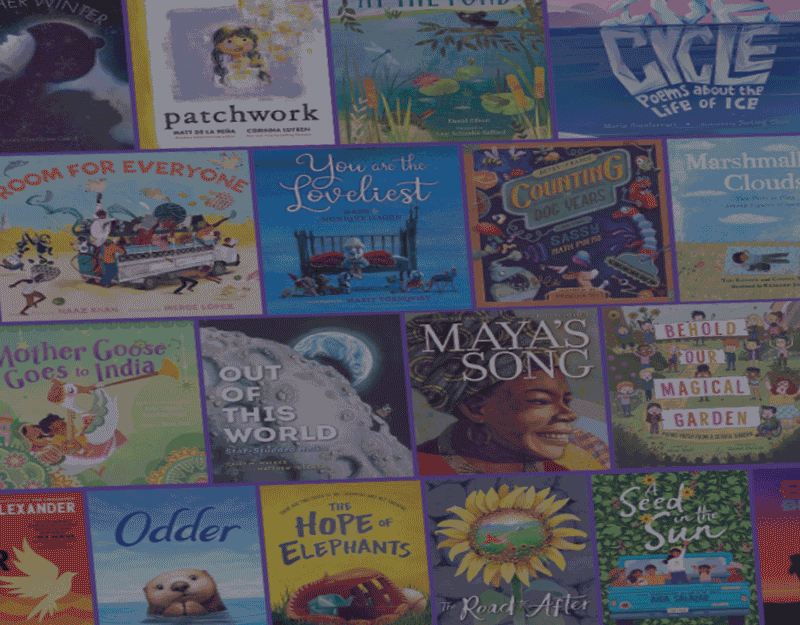

This was a lovely read-aloud title, even though I was reading it to myself (and my cat) and no one else. It helped me fully capture the quiet beauty in the poems, and better enjoy their interplay with each other, and the illustrations.
Thinking of the Newbery criteria, I think the interpretation of theme or CONCEPT, was the real winner. They definitely followed through and kept the magic alive between poems, which is not always easy to do with two distinct authors.
I also thought this was a very appropriate style–long enough to be a weighty collection, but not so long individually as to bog the young reader down. Paired lightly with humor and imagery, it works for kids.
Thank you for this introduction, Amanda! And I agree with you, Aryssa, that concept is what stands out most!
I loved that the book was broken into sections. When I was flipping back through, I realized all of my favorites were in the Fire section – “Thunderstorm,” “A Secret,” and my most favorite: “Fireplace.” The metaphor of the fire being a wolf pup felt fresh and unexpected and the final sentences kind of blew me away –
“It has no stomach, though. So fire
is never full, never satisfied.
That’s why, no matter how it begs,
we must never set it free.”
The collection has a nice mix of silly, out-of-the-box poems and ones that make you pause and think. It really does show kids (and adults) the importance of playing with words, ideas, and images and turning them into something new.
I agree that theme is the most notable of the Newbery criteria for this collection, most notably the theme of imagination. Additionally, it is well organized according to the four nature categories so it excels in presentation of information. What is interesting is the first poem, A Disappointment stands alone, uncategorized. It may just be my favorite. It shows the way we either look at things through the lens of imagination or a more practical, realistic lens. I think the message encourages the reader to be imaginative. (I definitely envisioned the clown.) The poems do grow on you as I read it again and again. The imagery is quite extraordinary-the harpist “has taken a great golden moth…” I know that younger students engage with poetry with humor and quickly grow to love the Jack Prelutsky and Shel Silverstein volumes. Perhaps this poetry is for children a little bit older who will appreciate the imagery provoked.
I agree with you, Kate, that I think the interpretation is the most notable quality. the opening poem, “A Disappointment” sets the tone for this book about the power of imagination. And like you mentioned, the stand alone nature of it gives it a special importance. The poems that follow continue to explore this idea and each ties in its own use of figurative language. As stated elsewhere, I am not sure that this will be a book students will naturally gravitate towards. As you mentioned, its generally the poetry of Silverstein, Prelutsky, and even Harris and Lansky that circulate the best. These poems are of a completely different nature entirely. I do think that could be of great service to teachers looking to integrate poetry, especially when looking at different elements of figurative language.
Thanks for the introduction Amanda. I agree that the poems make the reader both smile and think, a perfect combination for kids. As far as Newbery, I agree with Aryssa and Kate that the theme (concept) stands out along with the presentation of information with the poetry organized around nature.
This collection of poems show the reader how interesting the ordinary world can be. You never need to be bored. The poets Kooser and Wanek encourage readers to be more observant of what they see and encourages them to free their imagination and look with a different gaze, a great mentor text for a poetry unit. I only wonder which poet wrote which poem, or did they write each poem together?
Oh, Kate, I loved that first poem too! “…but my friend / who always sees things as they are / told me no…” I also liked the poem “A Bad Dream” from the Earth section:
“Deep in the night, a frightening dream
tried my door, and I called out for help,
my voice all alone in the silence.
The moon showed up almost at once,
wearing its white latex gloves, and dusted
the doorknob for prints and checked
all the windows for damage…”
The illustrations are as lovely, serene, and uncluttered as the poems themselves; overall the collection reminded me a bit of Out of Wonder: Celebrating Poets and Poetry by Kwame Alexander, Chris Colderley, Marjory Wentworth, and Ekua Holmes, and Firefly July by Paul Janeczko and Melissa Sweet.
I agree that theme and presentation of information are strong elements here. Not many poetry collections have won the Newbery, though, and compared to the heft, and richness and depth of character that a novel can offer, I’m not sure that this meets enough criteria well enough for me. Still, I’m very glad to have read it.
And did anyone else notice the fox? The front half disappears into the gutter or off the page in at least two places, leaving only the back legs and tail. Intriguing!
I was reminded of Firefly July too! I kept thinking of that one as I was flipping through these pages.
I had a hard time with this one. There were a couple poems I liked (I don’t have the book on me because it was due at the library, but I the one about the worm was probably my favorite). I do wonder about kid appeal. I work in a PK-12 school and I struggled to think about where I would put this title and who I would book talk it to. I think the illustrations hurt the book a little bit because they seem more for younger elementary when even though I would it was for older kids.
I have to agree with Michelle. This collection of poetry just wasn’t for me. I too think this book might not appeal to most kids. I love poetry, and I really expected a lot more from this book. Might just be that I have to give it another go.
Amanda B. and Michelle L. bring up a good point about the potential “child appeal” for MARSHMALLOW CLOUDS. I do wonder if kids are likely to pick up this kind of poetry book on their own. It doesn’t have the kind of immediate appeal that more humorous collections by Shel Silverstein or Chris Harris provide. It may have more potential as a classroom or one on one read aloud. Still, I think it rates highly in terms of “respect for children’s understandings, abilities, and appreciations,” as stressed in the criteria. For the child who does read (or has read to them) these poems, there’s a lot to interact with, right at their level.
The worm poem that Michelle mentions (“The World Without Me”) is a good example. It works on several different levels:
– The figurative image of each puddle as “another world.” Kids can get that, and they likely haven’t considered that before.
– The literal act of saving a worm (even though you don’t want to touch it). I imagine kids reading this poem and easily slipping into the shoes of narrator and considering whether or not they would have rescued that worm or not
– The abstract concept of alternate realities (“In the world without me, the worm died. / But in this world, I saved a worm.”) Those closing lines can refer to two physical worlds (the poet’s world and the world held within each puddle) and/or two realities, which depend upon the choice the poet makes.
That’s a lot for a five stanza poem, but I think it’s all presented at a level where child readers or listeners can grasp it. It’s poetry that’s kind of interactive: the reader has to engage with the images and think about them a little bit. That triggers the “imaginative introspection” that Amanda S. mentions in her introduction and successfully conveys the goal to (as Rox Anne C. puts it above) “encourage readers to be more observant of what they see.”
Just finished this. While I thought MARSHMALLOW CLOUDS was an above-average poetry collection for children, I am also in agreement with those who are unsure it does “excellence of presentation for a child audience” well. I think two ways authors can excel in this criterion is to really take the perspective of either a child or a child reader. I am not sure MARSHMALLOW CLOUDS does either. This sort of feels like an adult’s book, especially in its subjects of interest: the gasoline of a car with an oblique reference to horsepower (“Gas”), an unused boat (with the world-weary close on “meddlesome world”) (“Boat”), cleaning cobwebs with a rag on a broom (“June Afternoon”), using a TV remote to change one channel at a time (“Remote”) — what child has used a remote that way in years? — the specific foods evoked in “Book”: pita, mayo, mustard, salami, peppercorn, “ripe, stinky cheese” and romaine. I think a comparison with FARMHOUSE with its emphasis on the children of the house shows MARSHMALLOW CLOUDS comparative lack of effort to take the child’s-eye view of decaying things in “The Village Tennis Court” and “Barn.” This might be OK if the child reader’s capabilities were respected, but I am not sure about that either. I do think the attempt was made not to be too erudite, but I thought the poems overall might still verge on being too sophisticated–they definitely require some effort to decode, but I could be wrong here–has anyone tried it on kids yet?
It so happens that immediately after reading this, I read THE REAL DADA GOOSE, and I think this is the goods: Newbery-worthy, kid-friendly, and not just as poetry–it’s probably more effective and educational children’s non-fiction than HOW TO BUILD A HUMAN, BLUE, and others. Unlike many of its peers, Its backmatter is just as kid-friendly as the main text. It even does black rectangles. Unlike some others, I also thought it was a perfect use of medium. (I thought BLUE was good, but I thought it would have been better in a different medium than picture book. And while I appreciate the collaboration and respective contributions in AIN”T BURNED ALL THE BRIGHT, I am not convinced they needed or boosted each other.)